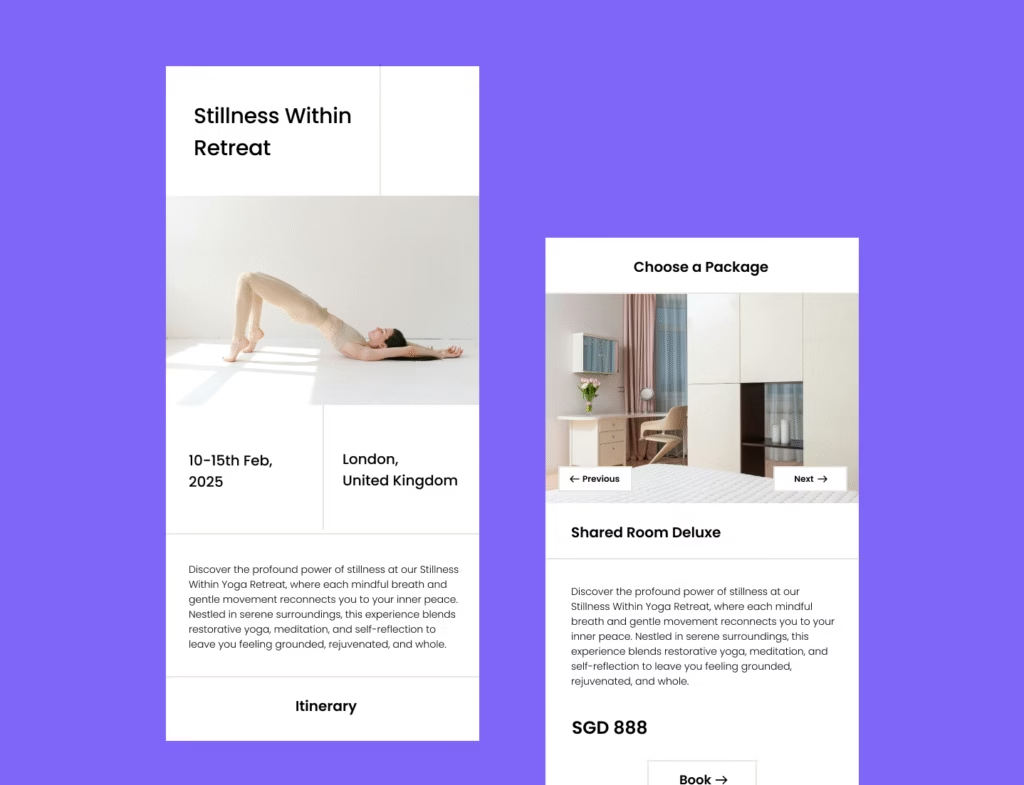When you first started teaching yoga, you probably didn’t expect to spend so much time managing calendars, payments, and back-and-forth messages.
Maybe you’ve pieced together a system using Google Calendar, Stripe, and a DIY website—but now that your student base is growing, so is the chaos.
Your inbox is full of booking requests, your payment links are scattered, and your site doesn’t quite reflect the calm, grounded energy you bring to your classes.
It’s a lot to manage on your own—and you’re not the only one feeling it.
The truth is, running a yoga business without the right tools can drain your time and energy.
But with the right systems in place—from smart schedulers to purpose-built platforms with beautiful yoga website design—you can streamline your work and elevate how you show up online.
In this guide, we’re sharing our top 5 tools to manage your yoga classes and clients. Whether you’re just starting out or ready to upgrade to professional-level systems, these tools (including some with customizable website templates for yoga) will help you spend less time on admin—and more time doing what you love.
What to Look for in a Yoga Class Management Tool
When choosing a yoga studio management tool, think beyond features. The real question is: does this system support how you teach, how you grow, and how your clients book with ease?
Here’s what to prioritize:
1. User-Friendliness (No Tech Headaches)
Your booking software shouldn’t feel like learning to code.
It should be intuitive—for you and your students.
That means a clean, uncluttered interface, easy navigation, mobile-friendly design, and setup steps that don’t leave you guessing.
Whether someone’s booking from their phone after class or you’re updating your schedule between sessions, everything should feel smooth and stress-free.
According to the CPD Online guide on setting up a yoga business, user-friendly platforms improve client retention by minimizing friction—because when it’s easy to book, people are more likely to come back.
2. Website Integration & Templates
Your website should be more than just a place to drop a booking link—it should feel like a natural extension of your brand and your teaching style.
Can you organize your offerings clearly?
For example, list weekly classes, feature an upcoming retreat, or label which sessions are in-person vs. online? Can you easily adjust the layout if you’re hosting a pop-up event or launching a new program?
Look for platforms that go beyond booking widgets and offer wellness-optimized website templates or full website builders.
These give you more control over how your offerings are presented—and help your site feel intentional, aligned, and easy to navigate.
Explore wellness-themed website templates here.
3. Online Payments & Checkout
Clients expect to pay on the spot—whether they’re booking a single class, buying a class pack, or signing up for a retreat.
Your booking tool should make this easy by supporting common payment methods like credit cards, bank transfers, and even mobile wallets.
Ideally, the checkout process happens right on your website—no need to send separate payment links or chase confirmations.
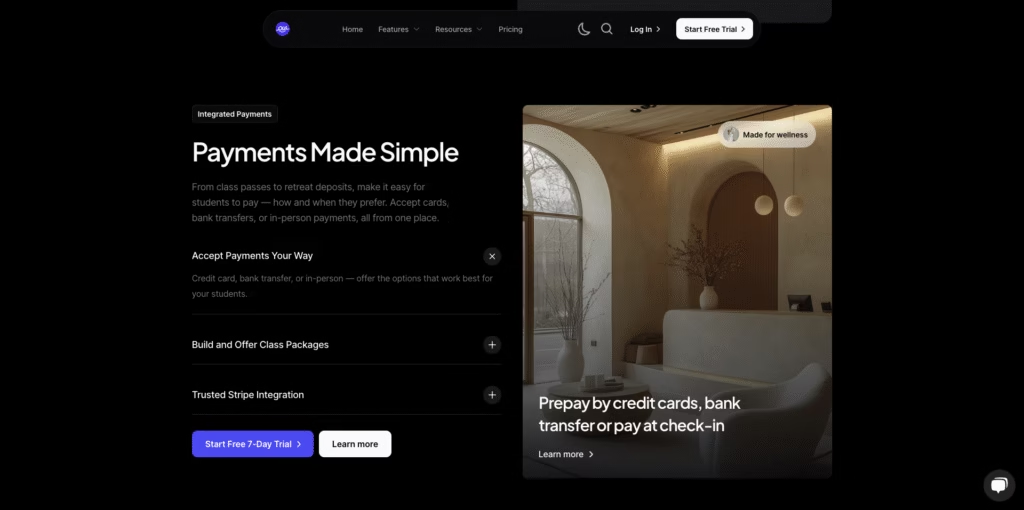
Many tools let you set this up with just a few steps: connect your Stripe or PayPal account, set prices for each offering, and turn on auto-confirmation emails.
According to Exercise.com, instructors who automate payments save over 10 admin hours per month.
That’s time better spent planning, teaching, or simply resting.
4. Class Scheduling & Automation
Manually sending reminders or tracking no-shows can quickly eat into your teaching time. That’s where automation comes in.
Look for a tool that includes automated email or SMS confirmations, reminder messages, and even waitlist management. A real-time calendar that syncs with your personal schedule can also help you avoid double-bookings or missed appointments.
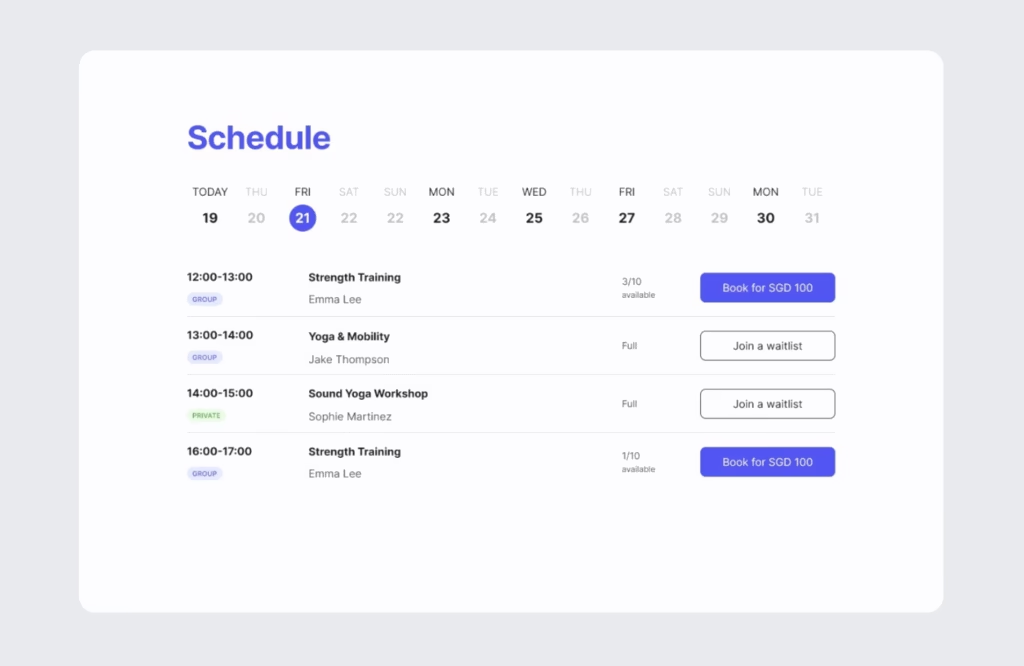
Bonus: when students can cancel or reschedule on their own (within your set rules), it saves you back-and-forth—and builds a more respectful and professional experience for everyone.
Smart scheduling reduces no-shows and brings more consistency to your income.
5. Packages, Memberships, Retreats
As your teaching grows, so will your offerings—think class packs, monthly memberships, or weekend retreats.
Your system should make it easy to offer different formats without starting from scratch each time.
Can you bundle 3 sessions at a discount? Offer unlimited classes for a flat monthly fee? Sell a retreat with a deposit option?
Tools like TheFlowOps let you set your own pricing, create custom packages, and apply them to the classes or events you choose.
Flexibility here means more freedom in how you serve your students—and how you grow your business.
Top 5 Tools to Manage Your Yoga Classes and Clients
Let’s dive into the platforms that help yoga instructors stay sane and scale.
1. TheFlowOps – All-in-One Studio Platform Designed for Yoga

Who It’s For:
Independent instructors, boutique studios, or wellness coaches who want an elegant, easy-to-use system to manage their entire business—website, booking, payments, and retreat planning.
Features Overview:
- Drag-and-drop Web Builder with yoga website templates designed for sessions, workshops, and retreats.
- Scheduler to manage drop-ins, 1:1s, group classes, and events. Students can book 24/7.
- Integrated checkout (Stripe + bank transfer) with class packs, memberships, and flexible pricing options.
- Responsive designs that look beautiful on mobile out of the box.
- SEO-optimized landing pages, automated class confirmations, and optional waitlists.
- Specifically built for yoga instructors.
TheFlowOps is ideal for instructors who want a beautifully branded site and booking flow in one tool. It’s more than just a calendar—it’s a full business builder.
👉 Build your yoga booking website in minutes
Bonus: Hosting a retreat? Download the Retreat Planning Guide to simplify your itinerary, bookings, and pricing.
2. Vev – Best Free Yoga Scheduling Tool
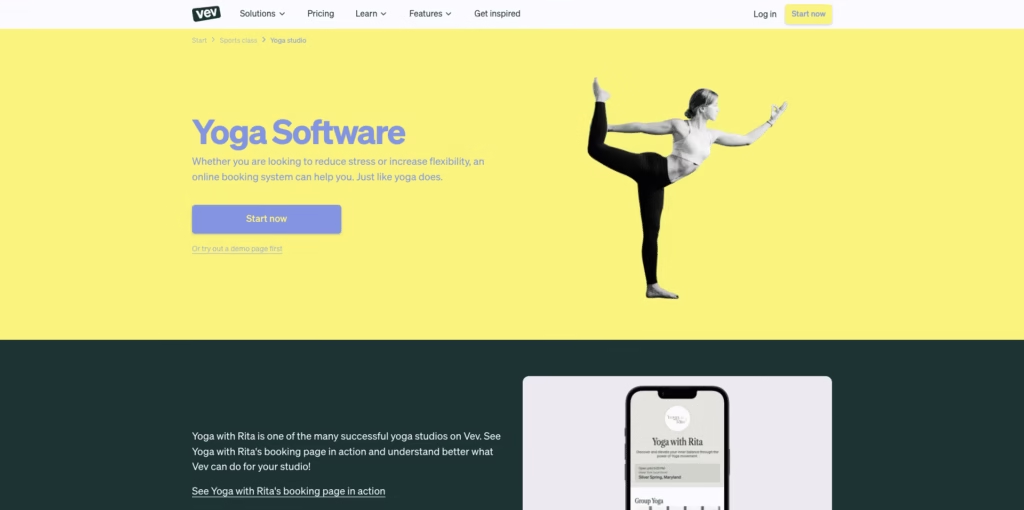
Who It’s For:
Freelancers and budget-conscious yoga teachers who need a reliable calendar and booking tool, but don’t want to pay for extra features.
Features Overview:
- Free forever plan.
- Booking widget with QR codes and mobile-ready UI.
- CRM tools for tracking student attendance and behavior.
- Simple automation for reminders and updates.
According to Vev’s blog, it’s used by over 10,000 small studios across Europe. It’s clean, functional, and gets the job done if you don’t need a full website platform.
Heads up: You’ll still need a separate site if you want a strong yoga web presence.
3. Momence – Best for Workflow Automation
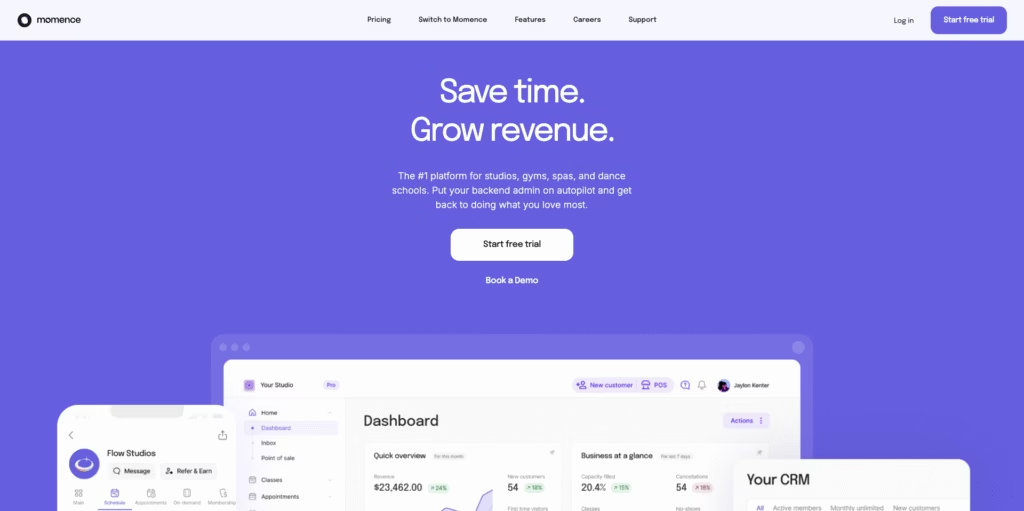
Who It’s For:
Instructors who want to automate everything—welcome emails, missed class follow-ups, upsell offers—without needing third-party tools.
Features Overview:
- Visual “Sequences” to automate instructor tasks.
- Class and event scheduling.
- Built-in CRM and text/email campaigns.
- Group and private session setup with recurring options.
Momence is workflow heaven for mid-sized instructors or teams. According to Momence’s official site, their automation tools reduce admin time by 40%.
4. Mindbody Online – Best for Large Studios & Franchises
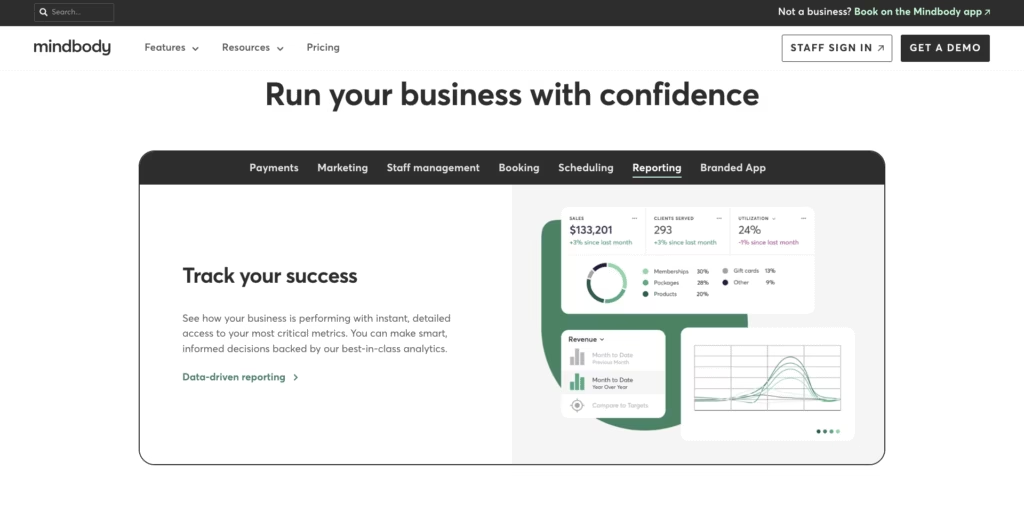
Who It’s For:
Multi-instructor studios, yoga gyms, or chains with complex operations and high-volume client bases.
Features Overview:
- Full-featured POS, employee tracking, branded mobile app.
- Advanced analytics and lead tracking.
- Integrated Mindbody Marketplace for visibility.
According to Mindbody’s platform overview, over 58,000 wellness businesses use their tools globally. But pricing starts high (~$159/month), so it’s overkill for many new instructors.
5. Glofox – Best for Member-Focused Studios
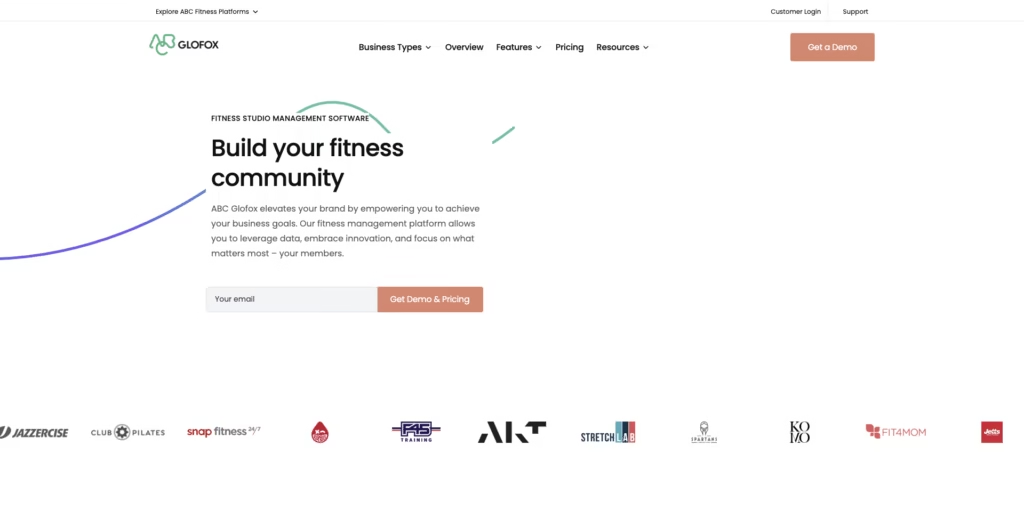
Who It’s For:
Yoga studios that want memberships, branded apps, loyalty systems, and more personalization.
Features Overview:
- Client retention and loyalty tools.
- Branded mobile app.
- Sales tracking, upsell prompts, POS.
According to Glofox, their system is designed to increase monthly recurring revenue by optimizing retention through app engagement and loyalty programs.
It’s a solid fit if you want your own app and don’t mind a steeper learning curve.
TL;DR – Which Tool Fits You?
| Tool | Best For | Has Website Templates? | Key Differentiator |
| TheFlowOps | All-in-one simplicity + branding | ✅ Yes | Yoga-specific design + scheduler |
| Vev | Free and functional | ❌ No | No-cost solution |
| Momence | Automation and follow-up | ❌ No | Sequences + smart workflows |
| Mindbody | Larger studios | ✅ Yes | Industry legacy + marketplace |
| Glofox | Member retention + branded app | ✅ Yes | Loyalty + personalization |
Each platform has its strengths—some offer automation, others focus on retention or scale.
But if you’re looking for an intuitive, all-in-one solution designed specifically for yoga teachers (with a beautiful website and scheduler included), TheFlowOps might just be the simplest way to get started.
Final Thoughts: From Chaos to Calm
If you’ve been feeling a little all over the place trying to manage your yoga classes and clients—you’re not the only one.
It’s easy to get caught up in tools that don’t quite fit or end up piecing things together with apps that don’t talk to each other.
Hopefully, this gave you a clearer picture of what to look for—and what might actually make your day-to-day easier.
Every platform has its pros, but if you’re looking for something that brings everything into one flow—your schedule, your classes, and your website—TheFlowOps might be worth checking out. It’s built for teachers and retreat hosts who want things to feel a little more organized, and a lot less stressful.
No pressure though—take what works for you.
Ultimately, choosing the right tools is just one part of the journey.
If you’re navigating studio life, don’t miss our deep dive into the common pain points yoga teachers face, explore how to save time on admin, and compare TheFlowOps with traditional studio management platforms to see which approach suits your teaching style.
You can always start with a free trial, or if a retreat’s coming up, grab our Retreat Planning Guide to help you map things out.
Little by little, your business gets to feel as grounded as your practice.
You’ve got this.


